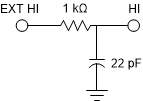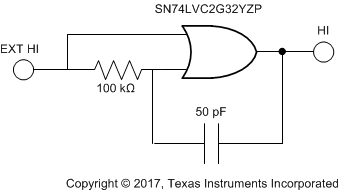SNVSAR1B March 2017 – March 2018 LM5113-Q1
PRODUCTION DATA.
- 1 Features
- 2 Applications
- 3 Description
- 4 Revision History
- 5 Pin Configuration and Functions
- 6 Specifications
- 7 Detailed Description
- 8 Application and Implementation
- 9 Power Supply Recommendations
- 10Layout
- 11Device and Documentation Support
- 12Mechanical, Packaging, and Orderable Information
Package Options
Mechanical Data (Package|Pins)
- DPR|10
Thermal pad, mechanical data (Package|Pins)
Orderable Information
7.3.1 Input and Output
The input pins of the LM5113-Q1 are independently controlled with TTL input thresholds and can withstand voltages up to 12 V regardless of the VDD voltage. This allows the inputs to be directly connected to the outputs of an analog PWM controller with up to 12-V power supply, eliminating the need for a buffer stage
The output pulldown and pullup resistance of LM5113-Q1 is optimized for enhancement mode GaN FETs to achieve high frequency and efficient operation. The 0.6-Ω pulldown resistance provides a robust low impedance turnoff path necessary to eliminate undesired turnon induced by high dv/dt or high di/dt. The 2.1-Ω pullup resistance helps reduce the ringing and over-shoot of the switch node voltage. The split outputs of the LM5113-Q1 offer flexibility to adjust the turnon and turnoff speed by independently adding additional impedance in either the turnon path, the turnoff path, or both.
If the input signal for either of the two channels, HI or LI, is not used, the control pin must be tied to either VDD or VSS. These inputs must not be left floating.
Additionally, the input signals avoid pulses shorter than 3 ns by using the input filter to the HI and LI input pins. The values and part numbers of the circuit components are shown in the Figure 16.
 Figure 16. Input Filter 1 (High-Side Input Filter)
Figure 16. Input Filter 1 (High-Side Input Filter)
If short pulses or short delays are required, the circuit in Figure 17 is recommended.
 Figure 17. Input Filter 1 for Short Pulses (High-Side Input Filter)
Figure 17. Input Filter 1 for Short Pulses (High-Side Input Filter)